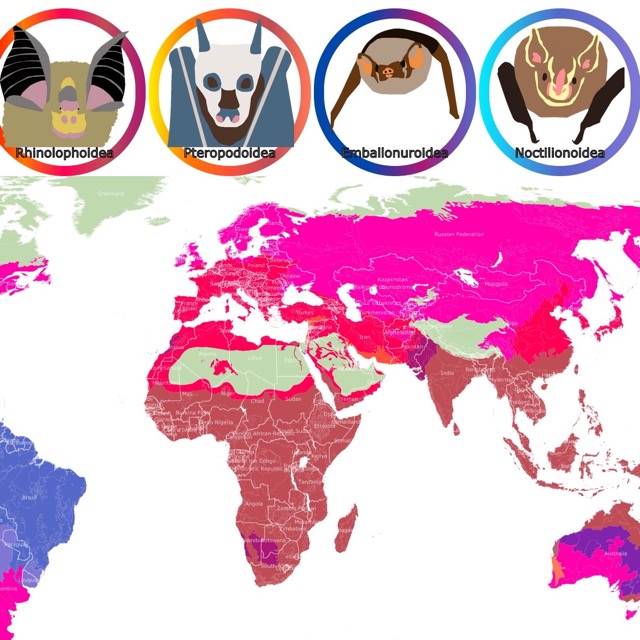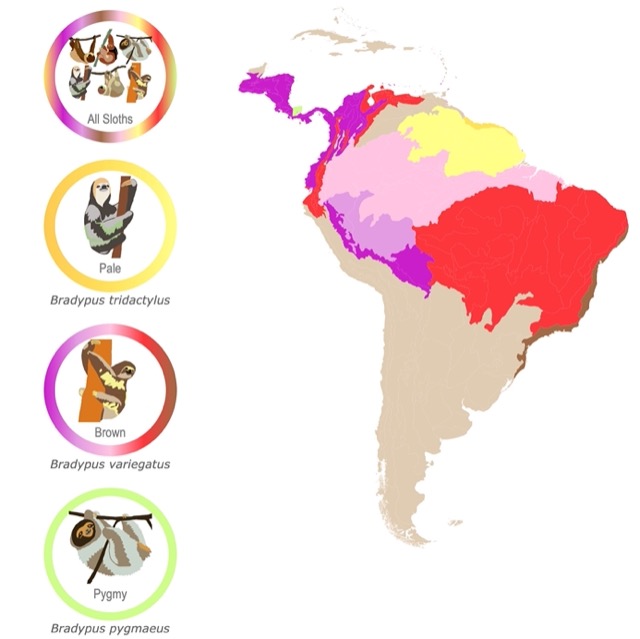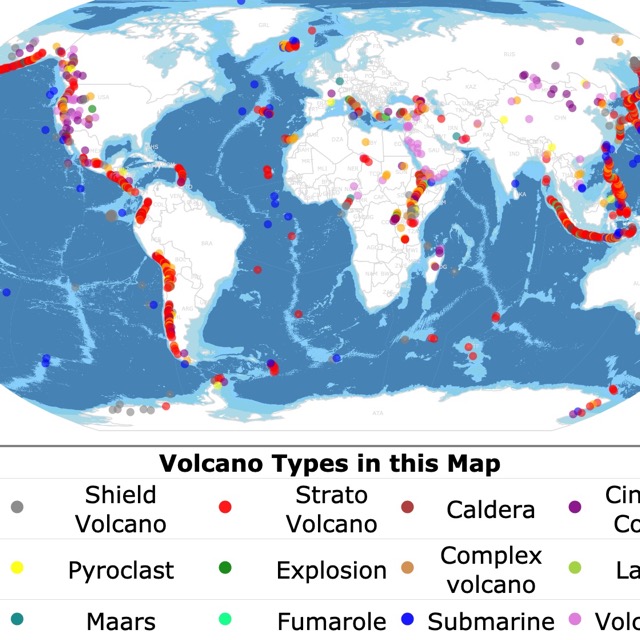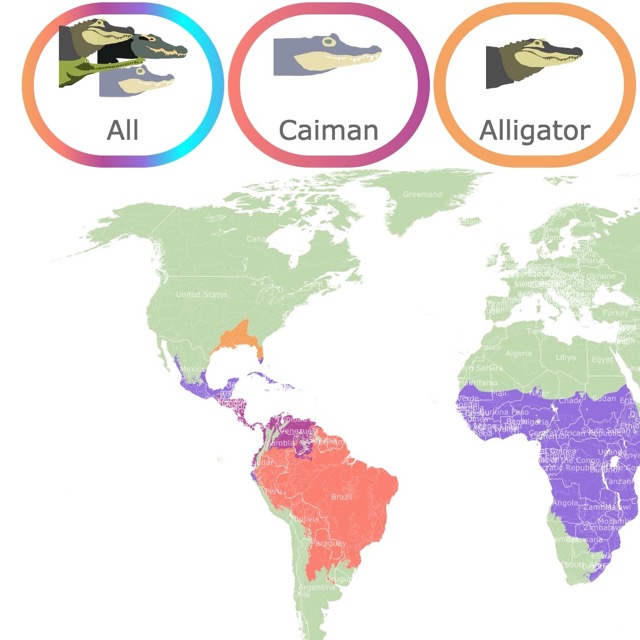Tropical Forests Map
This map shows in green, Tropical Forest Biomes. Dark green lines show the border of individual forest ecoregions. The map also shows countries, parallels, and meridians for reference. For more detail zoom in. For name and type of forest hover over the map. For more information scroll down.
Tropical Forests
Tropical forests display the greatest development of terrestrial ecosystems. These biomes support huge biomass, high productivity, and rich biodiversity under benign climatic conditions. Biomes
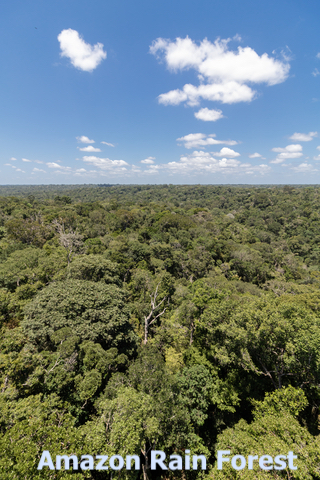
Tropical Forests are located close to the equator. They are usually 23.5°N (the Tropic of Cancer) and 23.5°S (the Tropic of Capricorn) from the equator. This map shows 30°N and 30°S.
Tropical Forests get on average 12 hours of daily sunlight, with very little difference between months.
In Tropical Forests, temperature is on average 20-25°C (68-77°F). The coldest and the warmest month do not differ by more than 5°C (11°F).
Most of the times precipitation is evenly distributed throughout the year. Annual rainfall is between 2,000 to 10,000 millimeters (79 to 394 inches) of rain per year.
Soils can be deep, but due to nutrient leaching, soils in tropical forests are poor in nutrients and very acidic. Because of ambient conditions like high humidity and high temperatures, decomposition is quite rapid.
Tropical Forest Species Diversity
While tropical forests occupy one tenth of the world's land area, they account for half of the world's species.
Species diversity might be supported by different theories. The first one theorizes that with more solar energy there is more diversity. A second theory suggests that with more climatic stability, there is more diversity.
The last one, suggests that the climate stability of tropical areas over geologic time, has given them more time to diversify. Temperate areas have been covered by ice during glaciation, therefore going through climatic changes that wiped out many species.
Tropical Forest Subdivisions
Tropical Forests may be divided according to rainfall distribution. Besides rainfall, forests may be further classified according to their soil type, elevation, and forest structure. Source: http://homepages.wmich.edu/~kohlers/bios105/files/tropical%20forests.pdf
This classification is assigned to each ecoregion on the map, and visible when you hover over it.
Lowland Evergreen Rain Forests
These are the tropical rain forests that most people envision. High species diversity and no noticeable dry season.
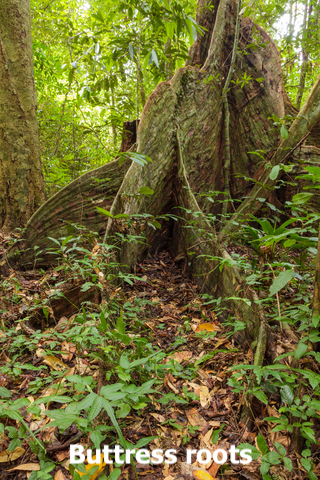
Their canopies have multiple levels. Mature tree crowns may have a radius larger than 65ft (20m). Trees may grow like buttresses for physical support (See photo below).
Lianas, and woody climbers, with hooks for climbing are common.
Epiphytes are quite common too. These are plants that live on other plants, like orchids, ferns, and bromeliads.
Another characteristic plant are the hemi-epiphytes. This plants germinate on the canopy and grow roots down the trunk. A common example are Ficus species.
An example of a lowland evergreen rain forest is the Amazon Rain Forest.
Semi-evergreen Rain Forests
Characterized by a dry season or moderate draught. Some trees may show a seasonal leafless period.
Deciduous component may take one third of the upper canopy and sometimes deciduous trees may clump in one area of the forest.
Species diversity is lower than evergreen rain forests.
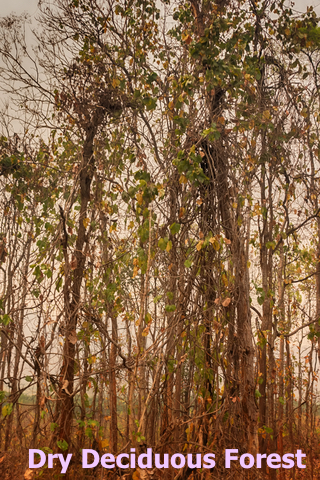
An example is the Odisha or Orissa semi-evergreen forests of west India.
Moist/Dry Deciduous Forests or Monsoon Forests
The length of the dry season increases to the point that most trees are deciduous.
Trees maybe leafless 2 to 6 months. Therefore light penetrates to the bottom of the forest much of the year.
Light penetration results in grass species being common. These forests grade into savannahs.
Some examples are Madagascar Dry Deciduous forests or South Deccan Deciduous forests in South India.
Montane Rain Forests
In mountainous regions in the tropics, there is a drastic change in vegetation as elevation increases.
Closer to summits the vegetation is shorter, about 5ft (1.5m). Plants also have small thick leaves.
Vines and buttresses are absent. Mosses are quite common.
An example of these forests are the Montane Rain Forests of the Andes in Central Colombia.
Heath Forests
Also called Kerangas in Asia. These forests have a canopy that is low and uniform. There is no vertical stratification.
Leaves are small with brown to reddish colors. The amount of light that filters to the ground is high.
This type of forests have a high number of insectivorous plants, like pitcher plants.
Soils are Podzolic, therefore acidic and with good drainage.
An example of these forests, are the Sundaland Heath Forests in South Borneo.
Mangroves
Also called "mangal", these forests have salt or brackish water. These forests are common along coastlines.
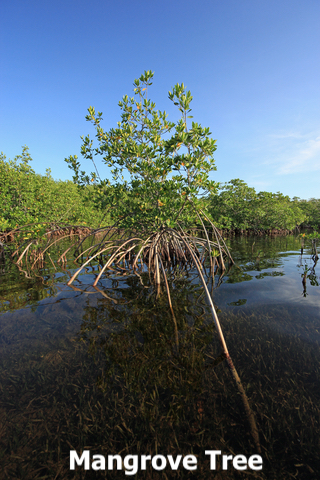
Mangrove forests do not have a high plant diversity. Most belong to the Rhizosphoraceae family, or mangroves.
Mangroves grow in anaerobic waters with high salinity. These trees also have pneumatophores, which enable part of their roots to grow above water to get oxygen.
In South Bangladesh you can find the largest mangrove forests called the Sundarbans Mangroves.
Freshwater and Peat Swamp Forests
This forests are mainly characterized by the habitat rather than the plant structure.
Peat is non decomposed plant material that years ago, during glaciation or due to bad drainage.
They are associated with low lying areas near rivers, and are seasonally covered by rivers.
This inundation results in high nutrient content and fast growth of trees.
An example are the Tonle-Sap Mekong Peat Swamp Forests in south Cambodia.
Tropical Evergreen Rain Forest Plants
The canopy in most tropical forests has multiple layers. Inside it, every plant is competing for a ray of light.
The canopy architecture has an upper layer of emerging tall trees. This is followed by a middle or main canopy layer. Below is a subcanopy of smaller trees and shrubs.
At the bottom, the forest is dark and shaded. This is why trees in tropical forests have wide leaves, to absorb as much light as possible.
Tropical Forests have high species diversity. In one square kilometer (0.38 square mile) it is possible to find up to 100 different tree species.
Trees are 83-114ft (25-35m) tall. They may have projected supports and not just one single trunk.
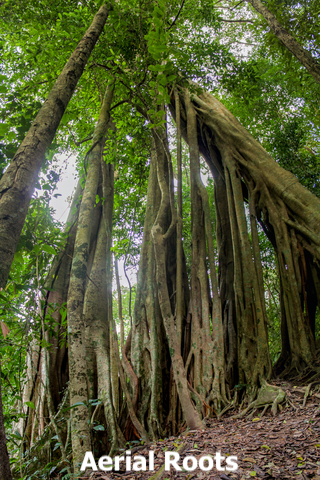
Trees are evergreen, the leaves have a dark green color, and the roots are shallow.
Common plant species are bromeliads, vines (lianas), orchids, ferns, mosses, and palms.
If you have an interest in plants and flowers from tropical forests but you cannot travel to see one, I suggest you take a piece of the forest to your home and buy this beautiful orchid found on Amazon: Easy Care Live Blue Orchid
Creepers or climbers (vines) are the second important floral members of the rain forests. These climbers are so irregular in form that it becomes difficult to find out their actual lengths. Source: Geographynotes.com
Because the soils are nutrient poor and very shallow, tree roots usually stay close to the surface. For this same reason trees also grow buttressed roots up to 30 ft (9m) high, or roots that hang from their trunks and branches, aerial roots.
Tropical Evergreen Rain Forests Animals
Many animals in tropical forests are adapted to live in trees. For example monkeys, snakes, frogs, lizards and small animals.
The widest variety of animals is believed to be insects. It is estimated that the number of insect species in the canopies of tropical rainforests is over 20 million.
In tropical evergreen rainforests due to the constant supply of food, there is no migration of organisms. In general they are least mobile.
Also in tropical evergreen rainforest, it has been suggested that organisms are stratified vertically. So deer are at the bottom, monkeys on the branches, and high above birds and butterflies coexist. Source: Geographynotes.com
Largest Tropical Forests
Tropical forests are located in three main regions close to the equator, in America, South Asia, and Africa. Other small tropical forests are located in Australia, Indian Ocean Islands, and Hawaii.
Amazon Rainforest
The Amazon Rain forest covers parts of Colombia, Venezuela, Guyana, Surinam, French Guyana, Brazil, Bolivia, Peru, and Ecuador. It spans 40% of South America.
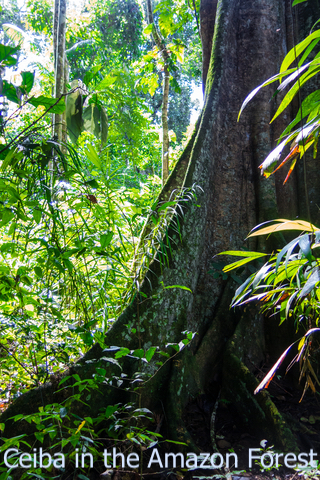
The Amazon Rainforest is the largest forest in the world, with approximately half of the world's forest area, spanning 6.7x106Km2.
The forest is drained by the Amazon River, the world's largest river in terms of discharge, and the second longest river in the world. The Amazon has 4,100 miles (6598 Km) of rivers, and receives over 1,100 tributaries.
The Amazon River discharges over 209,000 cubic meters of water per second into the Atlantic.
The Amazon forest, holds at least 10% of the world's known biodiversity.
It is estimated that the Amazon Rainforest holds 40K plant species, 16K tree species, 3K fish species, 1.3K bird species, and 430+ mammal species. Source: Mongabay
Some well recognized animals from the Amazon Rainforest include the sloth, anteater, toucan, macaw, Amazon River Dolphin, capybara, giant river otter, jaguar, puma, tapir, squirrel monkey, spider monkey, Hoatzin, toucan, black caiman, anaconda, poison frogs and more.
There is no complete list of wildlife without the birds in the Amazon forest. For a complete guide, this is the best book in the topic and it is found on Amazon: A Guide to the Birds of Colombia. It focuses in one country but you will probably find it useful for South American birds in general.
There are many trees in the Amazon rainforest, but an easy recognizable tree is the Kapok. This tree belonging to the Malvaceae family is the tallest tree in the Amazon. In Spanish it is known as Ceiba. Kapoks grow to 240 ft (73 m) tall.
Asian Tropical Forests
The rain forests in Asia are centered in the Malay Archipelago. This area has the second largest tropical forest with 2.5x106Km2.
The forests are on scattered islands of Indonesia, the Malay peninsula (Malaysia, Thailand, Myanmar), Laos, and Cambodia.
"The Southeast Asian rainforests are the oldest, consistent rainforests on Earth, dating back to the Pleistocene Epoch 70 million years ago." Source: Blue Planet
Millions of years ago when most of the planet went through a cooling period Southeast Asia remained warm due to its location. This and the melting of glaciers resulting in the formation of many islands in the region, contributed to amazing species diversification in the area.
Some scientists believe this forest has existed for over 100 million years.
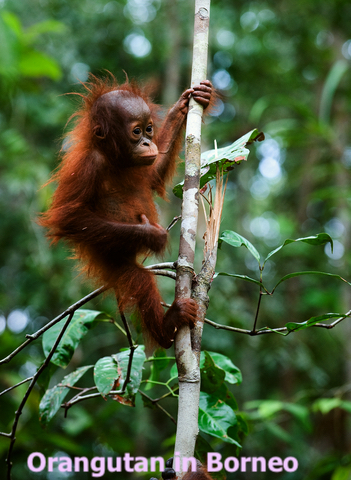
The region has two monsoon seasons. The northeastern monsoon occurs from October to February and brings heavy rains. The southwestern monsoon is stronger and occurs from April to August. These monsoons cause a rain shadow over opposite sides of the islands and Malaysian peninsula, increasing its ecosystem diversity.
Distictive animals from South East Asia Tropical Forests include: orangutans, birds, tigers, Malayan tapir, and elephants.
If you are planning a trip to check some of the beautiful birds in the area, I suggest you get this book found on Amazon: The 125 Best Birdwatching Sites in Southeast Asia.
A dominant plant of this forest is Dipterocarpaceae. These trees can reach heights of 120ft (36m). Another distinctive plant is the tualang or Koompassia excelsa. This tree can reach heights of up to 280ft (85m). This is the third tallest tree species in the world.
Trees in this region flower or fruit at different times. Some once every three years, others every ten years. This is also because the lack of nutrients in the soil.
There is a strong link between plants and animals through mutualistic relationships which help trees pollinate. This is because very little wind flows in the dense tree canopy. Source: Blue Planet
Besides the expected problems from deforestation throughout the world, another problem became evident several years ago in Southeast Asia. When a tsunami hit South East Asia in 2004, the areas with the most damage were the areas with the most deforestation.
African Tropical Forests
The largest forest in Africa is the Congo Basin Rainforest. Other African major Rainforests include the Guinean Forests, the Eastern Afromontane, the Coastal Forests of Eastern Africa, and the Forests of Madagascar.
The Congo Forest, located in Central Africa, has an area of approximately 1.8x106Km2. It extends from the Congo Basin to the Atlantic Ocean.
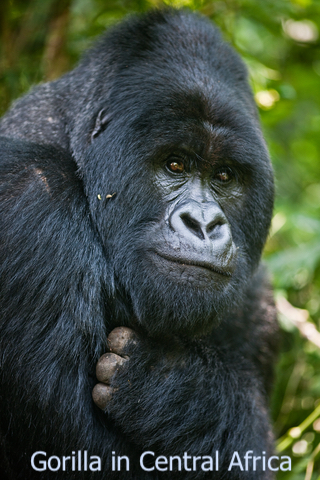
Half of Africa's animal species are in its rainforests. It is also estimated that 6,000 plant species exist in African forests. Nevertheless, compared with other forests, Africa has low diversity.
Low African diversity is partly attributed to the past climate of the area. It went through dry periods that wiped local species.
It is estimated that African tropical rain forests are larger carbon sinks than the Amazon. This is because in average trees in Africa are wider and taller than those in the Amazon. The Conversation
Some of the characteristic animals of these tropical forests include orangutans, chimpanzees, elephants, leopards, drill monkeys, African buffalo, cheetahs, warthogs, hippos, rhinos, giraffe, zebra, caracal, lions, baboons, and other megafauna.
African rainforests appear to be relatively poor in tree species compared to those of America and Asia. The most important commercial species belong to the Meliaceae family. Science Direct
One of the major threats to African Tropical forests is how little information we have about them. This is mainly because fragmented politics and civil conflicts. Source: Royal Society
There are other semi evergreen and deciduous forests in Africa, but as mentioned before due to lack of studies, most of the information is focused in the Congo Rainforest.
Tropical Forest Importance
Tropical forests hold 50% of world's timber and could potentially produce 75% of world's wood products if harvested efficiently.
Many common products used every day, were initially found in tropical forests. For example: bananas, cocoa, natural rubber, palm oil, rattan, and vanilla.
Tropical Forests hold scores of unknown compounds that may be used in medicine, agriculture, clothing, and industry.
In Tropical Forests water vapor entering the atmosphere via evapotranspiration is retained regionally, and recycled as rainfall.
Forests act as carbon sinks storing it as biomass or in its soils.
If you are interested in reading more about tropical rain forests I suggest you get this excellent book found on Amazon. Tropical Rain Forest Ecology, Diversity, and Conservation. It gives a complete view on the state of rain forests, its values, and threats.
Tropical Forests Threats
Half of tropical forests have been destroyed. Source: UCMP.Berkley.edu
Deforestation does not only result in forest loss but in habitat fragmentation. The outcome offers an insufficient amount of habitat for larger, or wide-ranging species of animals.
There is the possibility of developing sustainable forestry combined with conservation.
In the Amazon the greatest threats are deforestation for agriculture, mining, dam construction and cattle production. In Africa it is expanding population and pressure for agriculture.
In Asia the greatest pressure is commercial logging. Science Direct
About Tropical Forest Map
A biome is a large area defined by its soil, vegetation, climate, and wildlife. These are: freshwater, marine, savanna, tropical forest, temperate forest, and taiga.
If you subdivide these biomes you will get ecoregions.
Ecoregions are "defined as relatively large units of land or water containing a distinct assemblage of natural communities sharing a large majority of species, dynamics, and environmental conditions" FAO. The boundaries of these units are approximate to the original extent before major land use change.
This map shows the tropical forest biome and its ecoregions.
Resources for Tropical Rain Forest Map
The shapefiles to create the map with ecoregions of the world were obtained from WWF. The shapefiles with the countries of the world were downloaded from Natural Earth.
This map will be updated with new data! To receive updates on this and more nature maps, join my email list!!!!!!!
Made by Luz K. Molina with D3.js.

